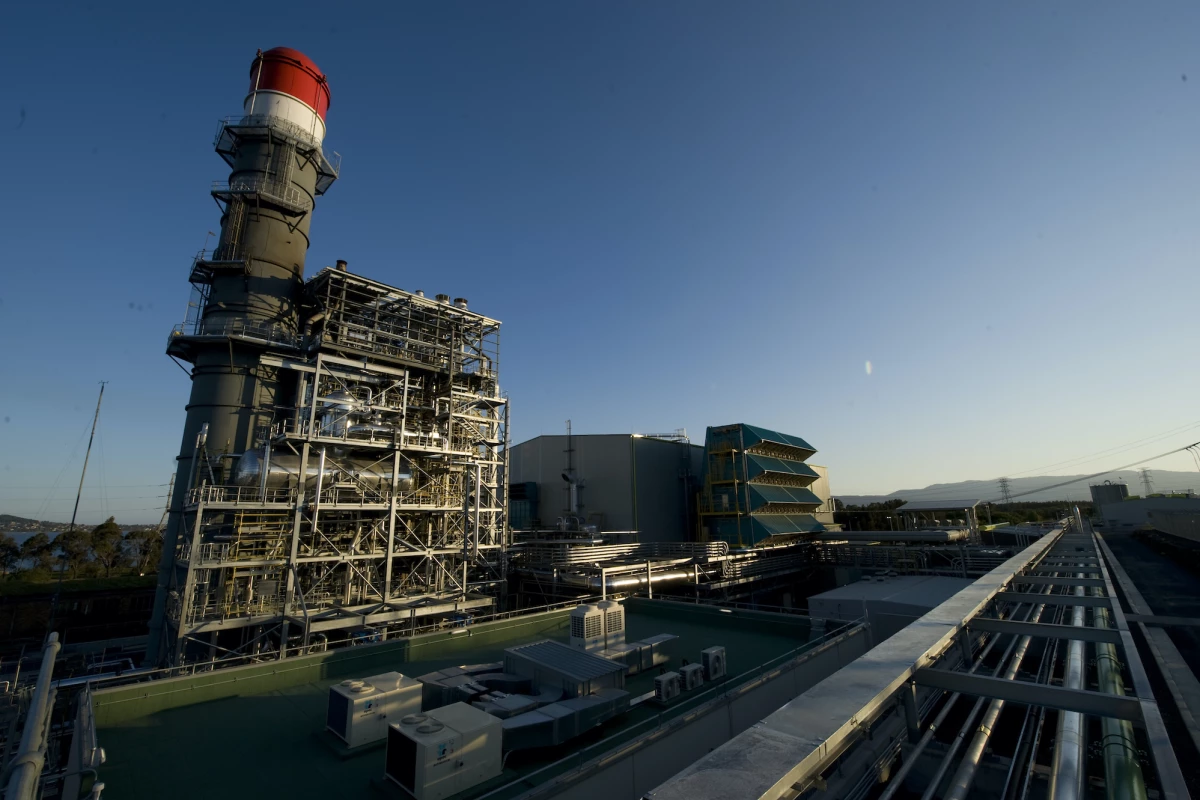The NSW Government has funded Australia's first dual-fuel-capable power plant to the tune of AU$83 million (US$64 million). The Tallawarra B project will initially run on natural gas, but will be gradually upgraded to burn green hydrogen over coming decades.
This will be a 300-plus megawatt "peaker" plant, sitting dormant much of the time, then firing up quickly to stabilize the power grid during demand peaks. It'll be in operation by 2023-24, providing enough energy at maximum power to run about 150,000 homes, and it's part of a move to replace grid power that'll be lost when the Liddell coal-fired power station is closed down, which is slated for 2022.
The expansion to the existing Tallawarra power station will start out burning purely fossil fuel, in the form of natural gas. But EnergyAustralia, which will own the plant, has committed to offsetting all emissions from the project across its operational life, as well as to "offer to buy" 200,000 kg (440925 lb) of green hydrogen per year from 2025, which will be blended in with the natural gas at a 5 percent proportion by volume to begin with.
"What’s particularly exciting," says EnergyAustralia Managing Director Catherine Tanna, "is that further engineering studies will see if the amount of green hydrogen can increase, which will further support the Port Kembla Hydrogen Hub."

The Australian Government has been particularly focused on natural gas in its decarbonization strategy, much to the disgust of green energy advocates, who see any government investment in fossil fuel energy generation both as a backwards step and a terrible use of public money, since renewable energy sources and grid-scale green energy storage options are rapidly coming down in price.
The problems are complex; Australia's Chief Scientist Alan Finkel has argued that gas-fired power generation is vastly cleaner than coal, and that using gas to reliably stabilize peak loads will make the adoption of renewable energy faster, easier and more reliable across the country.
Batteries are terrific, says Finkel, and so are pumped hydro and other energy storage solutions, but their capacity is limited, and better suited to peak smoothing than to preventing power outages altogether. You'd need unfeasibly massive batteries to keep the lights on if an multi-day extreme weather event shuts down the wind farms and severely curtails solar production.
What's more, these new dual-fuel-capable gas plants can be gradually converted to run on 100 percent green hydrogen, which will provide a similar level of service to natural gas. And the fact that EnergyAustralia has already signed on to buy 200,000 kg of green H2 will provide a contracted customer for fledgling green hydrogen producers, helping to get that industry up on its feet, ready to scale and prepare for exports.
On the other hand, as Renew Economy argues, hydrogen's energy density by volume is much lower than natural gas. So adding 5 percent hydrogen to the mix will do almost nothing to reduce this plant's emissions, and you'd need to ramp that proportion up to 75 percent just to achieve a 50 percent drop in total emissions. EnergyAustralia's commitment to offset all its emissions may not be worth the paper it's printed on if Australia's flawed carbon offset systems aren't fixed, and the company is under no contractual obligation to fully convert this plant to 100 percent H2, ever.
Even the language in the press release – "further engineering studies will see if the amount of green hydrogen can increase" – goes out of its way to be non-committal, and it's not clear how much engineering work is required, since other gas-to-hydrogen projects in Europe seem to have no problem making 100 percent H2 operation the end goal.
Either way, this plant is going to be built, and it's a model the Australian Government wishes to propagate around the country. But with private business and investment becoming increasingly leery of fossil fuel generator projects, it seems the conservative Australian and NSW governments are very keen to step in and use public money to steer things back toward fossil fuels, even when the free market and the rest of the world are moving in the opposite direction.
Sources: EnergyAustralia, NSW Government





